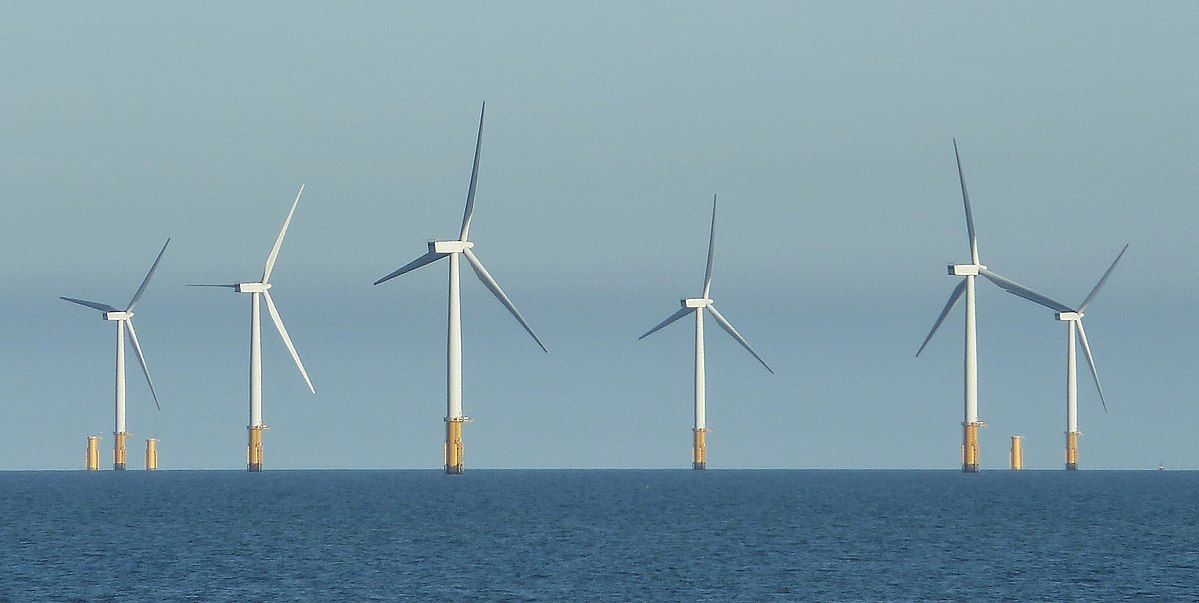The Federal Communications Commission (FCC) voted to begin gathering information on a Notice of Inquiry submitted by Nokia the development of offshore wireless 4G and 5G networks, which could be utilized by developers, owners, and operators renewable energy projects.
The FCC is now accepting comments regarding the the possible needs, uses, and impacts of opening up spectrum networks for offshore applications, with a specific focus on current and forecasted demand, as well as current and projected usage cases of these networks.
Nokia initially opened the inquiry as an opportunity to support the Nokia Wind Farm private wireless solution, a broadband connectivity platform Nokia has launched for connecting workers, sensors, cameras, and turbines at offshore wind installations. The company lauded the FCC’s decision in a statement:
“Nokia thanks the FCC for its actions today to advance a crucial need: access to 4G/5G spectrum for offshore uses. As a leader in providing broadband technologies to optimize renewable energy production at sea, Nokia sees the new FCC proceeding as an important step toward the U.S. increasing its access to sustainable energy for a greener planet.
“Specifically, the Nokia Wind Farm wireless solution provides mission-critical reliability and low-latency, broadband connectivity for connecting workers, sensors, cameras, and turbines. Nokia already has implemented this solution for offshore wind platforms in other regions of the globe and we look forward to providing the solution in the US to achieve a more sustainable energy future.”
While wind is the first resource that comes to mind when thinking about offshore renewable energy development, these networks would be open to developers and operators of any style of project installed offshore, including solar and energy storage, though no plans for the development of either in offshore applications is known to pv magazine.
The ruling could be useful for any future development of wave energy generation. The National Renewable Energy Laboratory (NREL) estimates that US waters hold enough wave energy to produce 80% of the country’s needs. While this energy cannot practically all be harnessed, NREL is exploring ways that marine wave energy can support the nation’s shift to non-emitting energy sources.
Wave energy isn’t expected to rival solar or wind power, but NREL sees use cases for the technology, especially in remote island communities, which currently largely depend on costly, carbon-heavy diesel imports for power. NREL also sees avenues for ocean wave power in offshore fishing, marine research, or deep-sea military operations.
This content is protected by copyright and may not be reused. If you want to cooperate with us and would like to reuse some of our content, please contact: editors@pv-magazine.com.









By submitting this form you agree to pv magazine using your data for the purposes of publishing your comment.
Your personal data will only be disclosed or otherwise transmitted to third parties for the purposes of spam filtering or if this is necessary for technical maintenance of the website. Any other transfer to third parties will not take place unless this is justified on the basis of applicable data protection regulations or if pv magazine is legally obliged to do so.
You may revoke this consent at any time with effect for the future, in which case your personal data will be deleted immediately. Otherwise, your data will be deleted if pv magazine has processed your request or the purpose of data storage is fulfilled.
Further information on data privacy can be found in our Data Protection Policy.